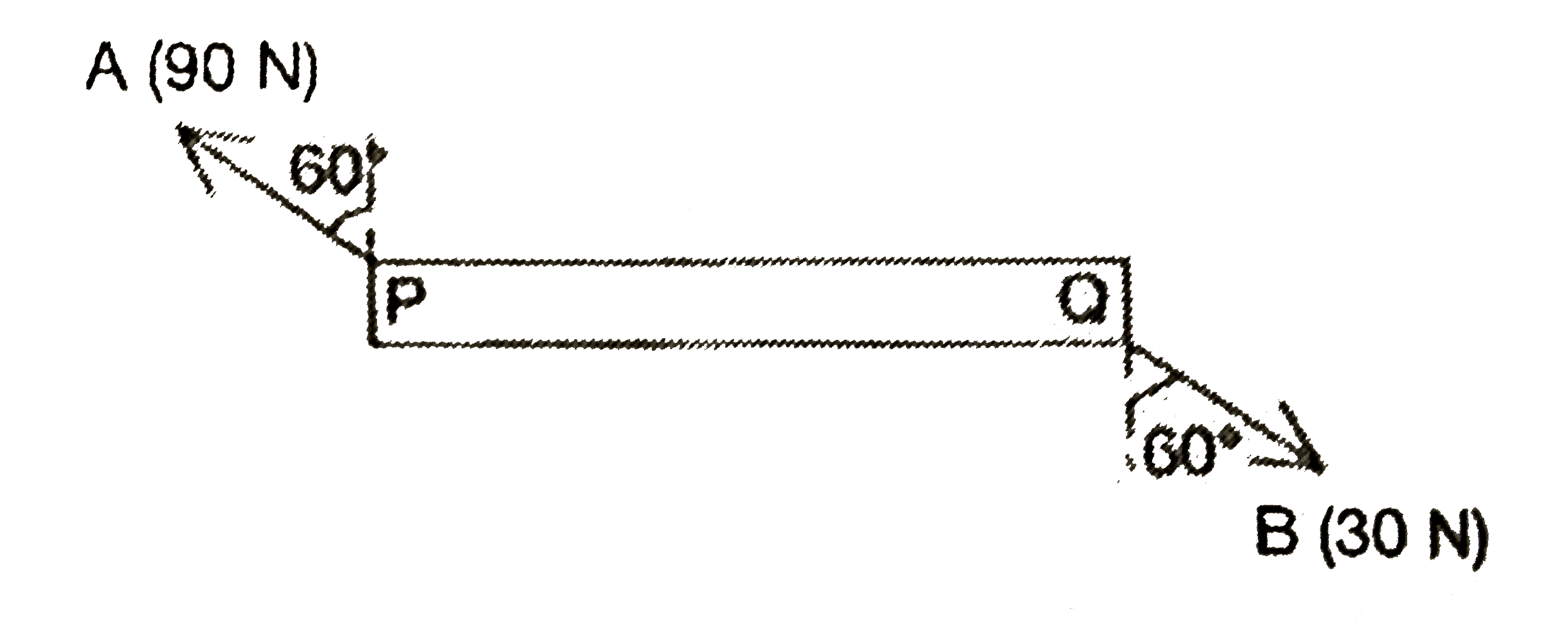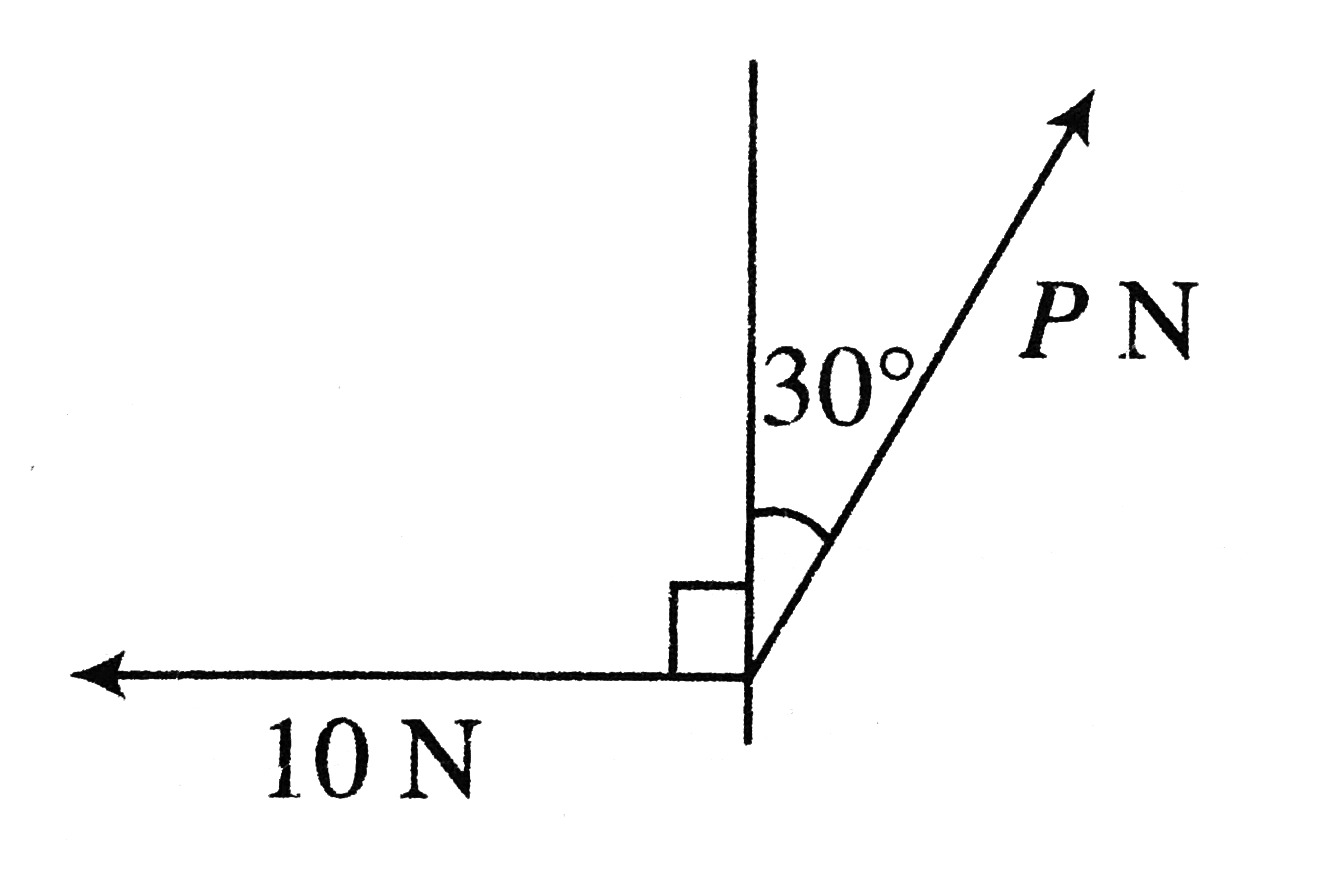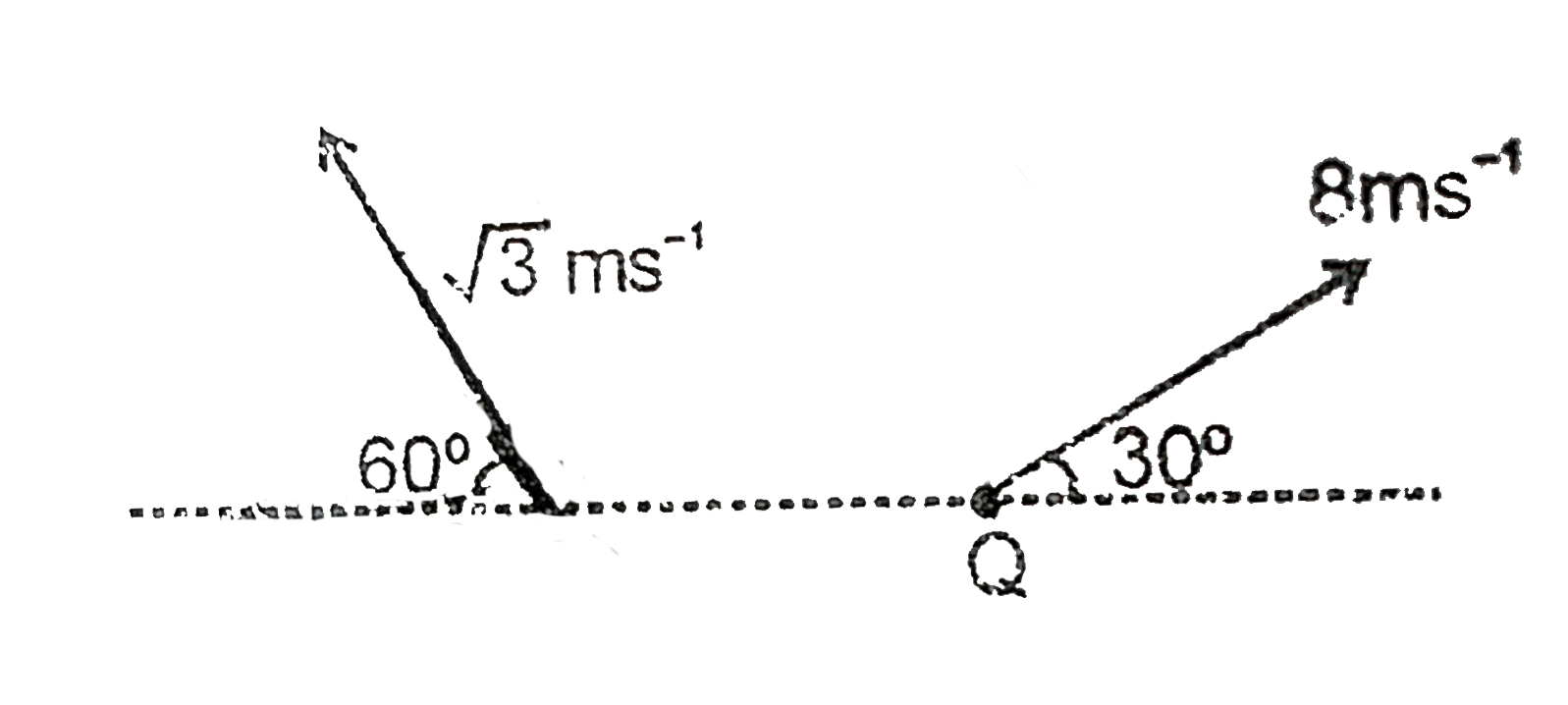Two forces of equal magnitude F act on two isolated bodies P and Q as shown in the figure. The mass of body Q is three times that of body P. The magnitude of the acceleration of P is

Three times that of Q
(1/3) that of Q
Nine times that of Q
(1/9) that of Q.
The correct Answer is:A
Let the mass of body P = m
the mass of body Q = 3m
As, force acts on P = force acts on Q , FP=FQ
or maP=3maQ∴ap=3aQ
[Here aP and aQ are accelerations of P and Q respectively]
Topper's Solved these Questions
- BOOK - SCIENCE OLYMPIAD FOUNDATION CHAPTER - NSO QUESTION PAPER 2017-18 SET-AEXERCISE - ACHIEVERS SECTION3videos
NSO QUESTION PAPER 2017-18 SET-A
- BOOK - SCIENCE OLYMPIAD FOUNDATION CHAPTER - NSO MODEL TEST PAPER -1EXERCISE - ACHIEVERS SECTION2videos
NSO MODEL TEST PAPER -1
- BOOK - SCIENCE OLYMPIAD FOUNDATION CHAPTER - NSO QUESTION PAPER 2017-18 SET-BEXERCISE - ACHIEVERS SECTION3videos
NSO QUESTION PAPER 2017-18 SET-B
Similar Questions
A uniform metallic rod AB of length 1.4 m is lifted by two forces P and Q acting along the directions as shown in the figure. If the magnitudes of P and Q are 20 N and 50 N, respectively, find the magnitude and the position of the resultant normal force that acts on the rod.
 View Solution
View SolutionTwo horizontal forces of magnitudes of 10N and PN act on a particle. The force of magnitude 10N acts due west and the force of magnitude PN acts on a bearing of 30∘ east of north as shown in (figure) The resultant of these two force acts due north. Find the magnitude of the resultant.
 View Solution
View Solution
Knowledge Check
- Question 1 - Select One
Equal forces F act on isolated bodies A and B as shown in figure. The mass of B is three times that of A. The magnitude of the acceleration of A is:
Athree times that of BB1/3 that of BCnine times that of BD1/9 that of B - Question 2 - Select One
The potential energy of a body mass m is U=ax+by the magnitude of acceleration of the body will be-
AabmB(a+bm)C√a2+b2mDa2+b2m - Question 3 - Select One
Two forces with equal magnitudes F act on a body and the magnitude of the resultant force is F /3. The angle between the two forces is
Acos−1(−1718)Bcos−1(−13)Ccos−1(23)Dcos−1(89)
Two forces, with equal magnitude F, act on a body and the magnitude of the resultant force is F3. The angle between the two forces is:
View SolutionThe displacement of a body is given to be proportional to the cube of time elapsed. The magnitude of the acceleration of the body is
View SolutionTwo forces with equal magnitudes F act on a body and the magnitude of the resultant force is F /3. The angle between the two forces is
View SolutionTwo particles P and Q are moving as shown in the figure. At this moment of time the angular speed of P w.r.t. Q is
 View Solution
View SolutionA force of a given magnitude acts on a body . The acceleration of the body depends on the
View Solution

